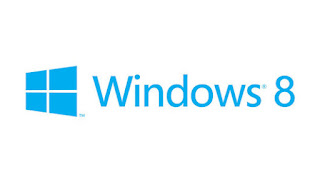From the marketing savants that brought you "Googlighting" and "Gmail Man", I give you......
The New Windows logo
Now, I have written about Windows 8 being a strategically flawed product, but Microsoft seems dead set on complementing it with a flawed marketing plan as well. There have numerous, mixed reactions from across the globe, which to be honest, seem to be missing the point. Microsoft revealed the following rationale for the change:
1. We wanted the new logo to be both modern and classic by echoing the International Typographic Style (or Swiss design) that has been a great influence on our Metro style design philosophy. Using bold flat colors and clean lines and shapes, the new logo has the characteristics of way-finding design systems seen in airports and subways.
2. It was important that the new logo carries our Metro principle of being “Authentically Digital”. By that, we mean it does not try to emulate faux-industrial design characteristics such as materiality (glass, wood, plastic, etc.). It has motion – aligning with the fast and fluid style you’ll find throughout Windows 8.
At this point, I really have to wonder if Microsoft has handed over their entire product & marketing strategy to designers. Nobody in Microsoft should care what the design principles behind the logo are. What they should care about is that a logo is their first, visual touch point with a potential consumer, which should highlight or serve to remind consumers of Microsoft's strengths.3. Our final goal was for the new logo to be humble, yet confident. Welcoming you in with a slight tilt in perspective and when you change your color, the logo changes to reflect you. It is a “Personal” Computer after all.
What is Windows' biggest draw, from the perspective of the average consumer? It's not Microsoft Office. It's one word - Familiarity. Now, Microsoft has already succeeded in weakening this strength, thanks to Metro user interface. The Metro UI is about as alien to the average windows user as it can get. When this is combined with the fact that, half of those who have tried the Windows 8 consumer preview wouldn't recommend it, Microsoft already has a problem on its hands. The one last factor that could give a potential consumer an air of comfort, in terms of product recognition, was the well-known Windows logo..... which is now history.
The WOA Problem
Sadly, the problems don't stop at the logo. Microsoft has decided to ship the following editions of Windows 8:Anyone see a problem here? Why is Windows RT, or Windows On ARM (WOA) as we know it, lumped in with all the other editions? Shouldn't the announcement or any marketing campaign be separate?
- Windows 8
- Windows 8 Pro
- Windows RT
Because WOA does not support legacy applications, it is in essence a completely different product as compared to the x86 version, from the perspective of consumers. This is one situation, where you should not be mentioning any semblance of familiarity - even the name "Windows". At the very least, I will give them credit for not calling it Windows 8 RT and not announcing the previously rumored 9 editions.
The main problem is that Microsoft is going to be launching tablets based on Windows 8 (the x86 version), as well as Windows RT (WoA), and most consumers will not know the difference between the two. If Microsoft is going to depend on sales people to educate consumers on the difference between x86 and ARM versions of Windows, both Microsoft and their consumers are in for a rude awakening.
Conclusion - At the root of it, this whole mess has been caused by Microsoft attempting to fuse two different products into one schizophrenic whole, because of their fear of the potential impact of tablets on PC sales. Ideally, Windows 8 on x86 and Windows RT should have been two completely different products from a marketing perspective, with different logos & brand names, to ensure that consumers understand this. Instead of solving the two problems at hand, Microsoft's marketing strategy seem to have made them worse.








